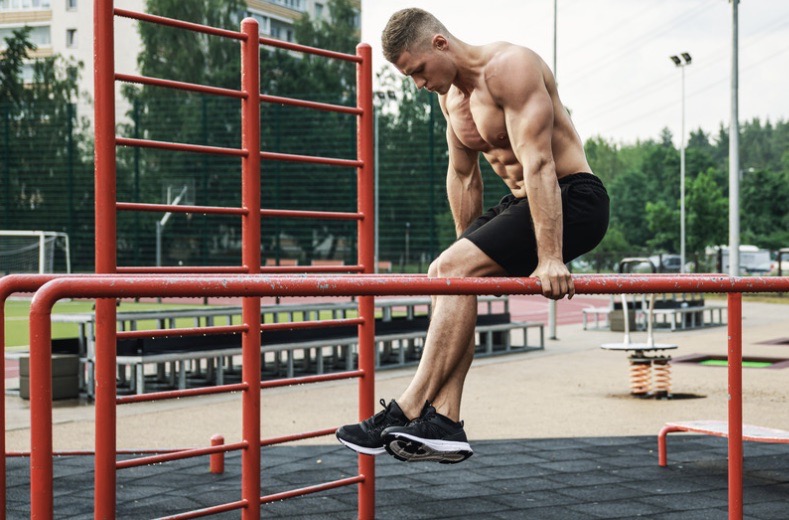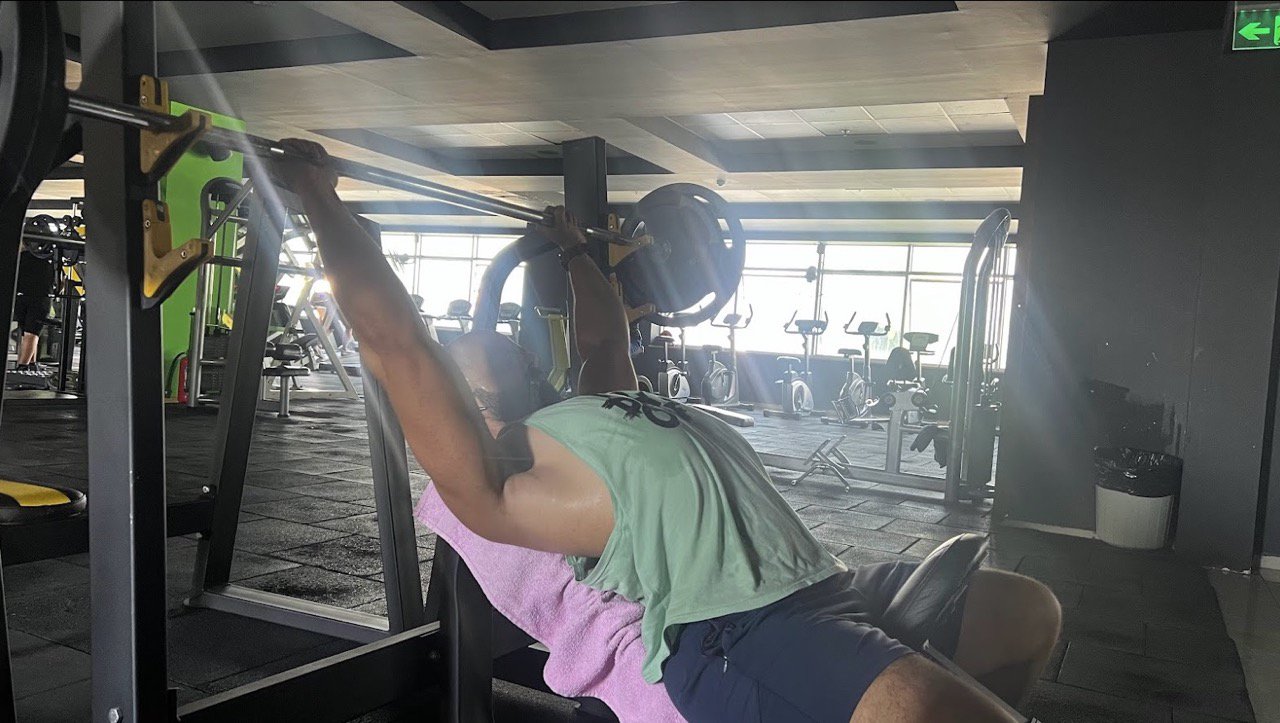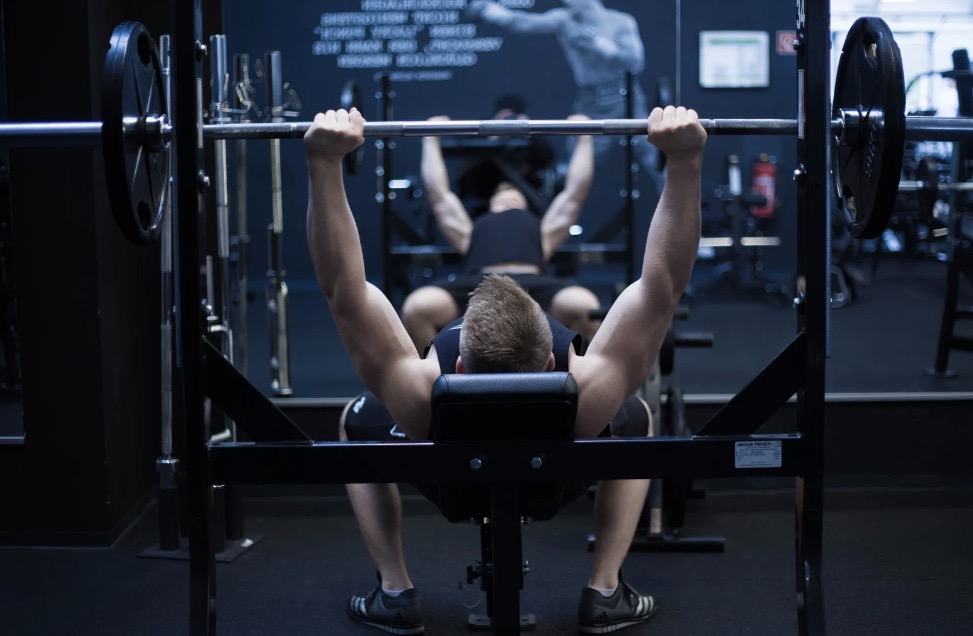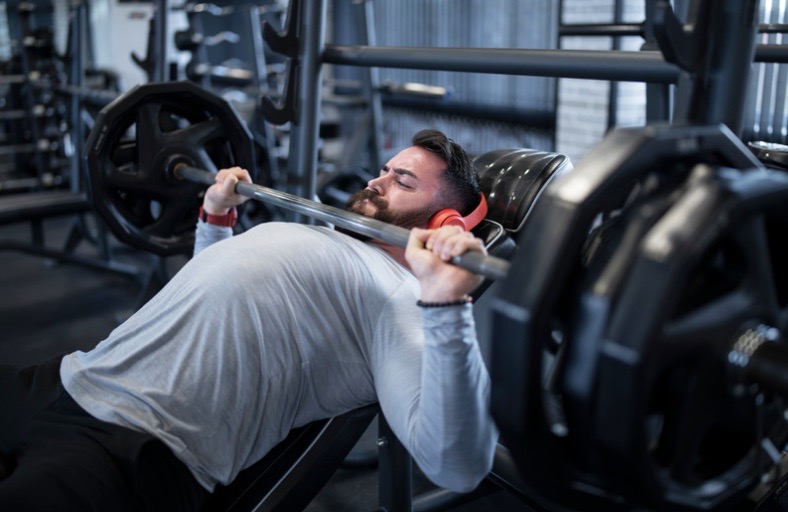Are you on a quest for a more muscular chest? You’ve probably heard the common advice: do bench presses. But what about dips? Which exercise offers more value for your effort?
In a hurry? Here’s a quick answer
In a nutshell, the difference between dips and bench press are in the muscles they target and the way they’re performed. Dips primarily target the chest, triceps, and shoulders, while the bench press focuses on the chest and triceps, offering more control and stability.
In this detailed guide, we’ll dissect the bench press and dips, examining the specific muscles they target and their effectiveness in chest muscle activation.
By the end of this guide, you’ll clearly understand when to choose bench press, when to opt for dips, or when a combination of both would be most beneficial.
What’s The Difference: Bench vs. Dips?
When comparing dips and bench presses, the choice hinges on your objectives. If tricep size is your goal, dips emerge as the superior exercise.
But if your goal is to boost your overall pressing capacity, the bench press takes the crown, as it allows for using heavier weights in a safer manner than dips.
Bench Press vs. Dips: A Detailed Comparison
Bench presses and dips are both powerhouse exercises that can develop your upper body strength.
The bench press is a classic weightlifting exercise that targets your chest, shoulders, and triceps.
On the other hand, dips are a bodyweight exercise that primarily works your chest, triceps, and front shoulders.
While they target similar muscle groups, the way they engage these muscles and the benefits they offer can vary.
Both bench press and dips are fantastic for building strength and muscle mass.
[Read: The Ultimate Guide on Training Routines and Programs]
They’re versatile, practical and can be adjusted to suit different fitness levels.
However, many people need help deciding between these two.
So we’ll break down the differences below.
What’s the Difference Between Bench Presses and Dips?
The bench press is a compound exercise that allows you to lift heavy weights, increasing muscle mass and strength.
However, it requires specific equipment and space, which might only be available to some.
On the other hand, dips are a bodyweight exercise that can be done almost anywhere.
They engage a wide range of muscles and improve your stability and mobility.
However, they can be challenging for beginners and those with shoulder issues.
Research shows that both exercises are effective for muscle activation.
A study published in the Journal of Strength and Conditioning Research found that the bench press activates the pectoralis major more than dips.
However, dips engage more stabilizer muscles, leading to improved functional strength.
When To Choose Bench Press or Dips
So, how do you choose between bench presses and dips?
Here are some factors to consider:
- Your Fitness Level: Beginners might find dips challenging, while the bench press allows for more controlled progression.
- Your Goals: If you’re aiming for muscle mass and strength, the bench press might be more suitable due to the ability to add more weight. Dips could be a better choice if you’re looking for functional strength and mobility.
- Your Equipment: If you can access a gym or a bench press setup at home, great! If not, dips can be done with minimal equipment.
Remember, there’s no best answer. The best exercise is the one that suits your needs, goals, and preferences.
5 Reasons to Choose Dips over Bench Press

Here are reasons to go with dips over bench press:
1. Range of Motion
Dips take the crown when it comes to the range of motion. This extended range can enhance muscle activation and potentially more muscle growth.
2. Muscle Activation
Anecdotal evidence suggests that dips might hit the chest and triceps harder than the bench press. After a heavy dip workout, you might find your chest feeling the burn for days, something that might not be as pronounced after bench pressing.
3. Mass Building
When it comes to building mass, dips are extremely powerful. They’re a significant mass builder for both the chest and triceps and can lead to noticeable muscle size and strength increases.
4. Assisted Dips
If bodyweight dips sound intimidating, don’t worry. You can start with an assisted dip machine commonly found in gyms. This machine can help you build the strength needed to perform dips without assistance.
5. Variety in Training
Incorporating dips into the training routine can add variety and benefits even for powerlifters who need to practice the bench press for competition.
While the bench press is a tried-and-true exercise, dips bring a lot to the table. They offer a range of benefits and can be a valuable addition to your strength training.
5 Reasons to Choose Bench Press over Dips

There are several reasons why someone might choose the bench press over dips. Let’s get into some of these reasons:
1. Controlled Progression
One of the main advantages of the bench press is the ability to control the weight you’re lifting precisely. This makes it easier to plan your progression, gradually increasing the weight as your strength improves.
With dips, if you’re using a weight belt, the resistance is essentially your body weight, making progression less straightforward.
2. Less Strain on Shoulders
While dips are considered to be functional exercises, they can strain your shoulders significantly, mainly if performed incorrectly. This could lead to injuries. When done correctly, the bench press places less stress on the shoulder joints, making it a safer option for those with shoulder issues.
3. Targeted Muscle Activation
The bench press is renowned for effectively targeting the chest muscles. While dips also work the chest, they engage a wider range of muscles, which can make the exercise feel less focused. If your primary goal is to build your chest muscles, the bench press might be the better choice.
4. Ease for Beginners
For beginners, the bench press can be a more accessible exercise. It’s easier to learn, and the risk of injury is lower, especially when performed with proper form and a spotter.
Dips, however, require certain strength and stability, which might be challenging for beginners.
5. Powerlifting and Bodybuilding
The bench press is a staple exercise if you’re into powerlifting or bodybuilding. It’s one of the three lifts in powerlifting competitions and is renowned for its effectiveness in building chest mass.
While both the bench press and dips have their unique benefits, the choice often comes down to personal goals, fitness level, and preference.
With its controlled progression and targeted muscle activation, the bench press can be a valuable tool in your fitness arsenal.
Bench Press vs. Dips: Differences, Benefits, and Factors to Consider
Here’s a list of differences, benefits, as well as other factors between the bench press and dips:
Bench Press
- Equipment Needed: Requires a bench and barbell or dumbbells.
- Muscle Activation: Primarily targets the chest, triceps, and front shoulders.
- Progression: Allows for precise weight control, making progression easier to manage.
- Strain on Shoulders: This places less stress on the shoulder joints, making it a safer option for those with shoulder issues.
- Targeted Muscle Activation: Known for its effectiveness in targeting chest muscles.
- Ease for Beginners: More accessible for beginners due to controlled movement and less required stability.
- Powerlifting and Bodybuilding: A staple exercise in powerlifting and bodybuilding for building chest mass.
Dips
- Equipment Needed: Requires parallel bars or a dip station. It can also be done using a bench or chair for modified versions.
- Muscle Activation: Works with a wider range of muscles, including the chest, triceps, front shoulders, and back muscles.
- Progression: Progression can be less straightforward as the resistance is essentially your body weight.
- Strain on Shoulders: Dips can strain the shoulders significantly, especially if performed incorrectly.
- Functional Strength: Engages more stabilizer muscles, improving functional strength and mobility.
- Difficult for Beginners: This can be challenging for beginners due to the required strength and stability.
- Versatility: It can be done almost anywhere with minimal equipment, making it versatile.
Biomechanical Differences Between Dips and the Bench Press
Ready to explore biomechanics?
Fear not; we’re keeping it light and digestible.
Our focus?
The biomechanical differences between dips and bench presses.
Biomechanics, in layman’s terms, is the study of body movement and the forces involved.
When we examine an exercise’s biomechanics, we observe how our muscles, joints, and bones collaborate to execute it.
Let’s kick off with dips. Performing a dip means maneuvering your body through space, demanding muscle coordination and balance.
Your shoulders extend, your chest muscles stretch as you descend, and as you ascend, your chest contracts and your triceps extend your elbows.
Switching to the bench press, you’re stable on a bench, moving the weight vertically.
Your shoulders flex, your chest contracts to push the weight, and your triceps assist, though the movement is more isolated than in dips.
So, what’s the takeaway?
These biomechanical variations influence the muscles you target, and the strength gains you achieve.
Dips engage more stabilizer muscles, enhancing functional strength and mobility.
Conversely, with its controlled movement, the bench press is effective for building muscle mass and strength.
Understanding an exercise’s biomechanics can optimize your performance and workout benefits.
So, whether you’re team dips, team bench press, or team both, keep this knowledge in the back of your mind.
Muscles worked in Bench Press
The bench press is a compound exercise that works for multiple muscle groups at once. Here are the primary muscles targeted:
- Pectoralis Major: These are your main chest muscles. The bench press is a fantastic exercise for building mass and strength in this area.
- Triceps Brachii: Located at the back of your upper arm, the triceps are heavily involved in the bench press, particularly during the pushing phase of the exercise.
- Anterior Deltoids: These are the front parts of your shoulders. They assist in the pushing motion and stabilize the shoulder joint during the bench press.
- Latissimus Dorsi: While not a primary mover, your lats (located in your back) play a crucial role in stabilizing your body during the bench press.
Muscles Worked in Dips
Dips are also a compound exercise and engage a wide range of muscles:
- Pectoralis Major: Just like the bench press, dips work your chest muscles. However, the muscle activation can vary based on how you perform the exercise. Leaning forward during dips can increase chest activation.
- Triceps Brachii: Dips are a fantastic exercise for building strong, powerful triceps. They’re heavily involved in the pushing phase of the exercise.
- Anterior Deltoids: The front parts of your shoulders are also worked during dips. They assist in the pushing motion and help stabilize your body.
- Rhomboids and Latissimus Dorsi: These back muscles are engaged during dips, helping to stabilize your body and control movement.
Differences and Similarities Between Bench Press and Dips
Differences:
- Equipment: Bench press requires a bench and weights, while dips require parallel bars or a dip station.
- Muscle Activation: Both exercises target similar muscle groups, but activation varies. Dips are known for engaging muscles that stabilize, while bench presses target the chest.
- Progression: Bench press allows for controlled weight progression, while dips progression is typically based on body weight.
- Accessibility for Beginners: Bench press is often more accessible for beginners, while dips require a certain level of strength and stability.
Similarities:
- Muscle Groups: Both exercises primarily target the chest, triceps, and front shoulders.
- Compound Exercises: Both are compound exercises that target multiple muscle groups simultaneously.
- Upper Body Strength: Both exercises are excellent for building upper body strength and muscle mass.
- Versatility: Both exercises can be modified to suit different fitness levels and goals.
What do Other Coaches Recommend?
Here’s what other blogs and YouTubers recommend when it comes to choosing between bench presses and dips:
- Horton Barbell suggests that choosing between dips and bench press depends on different training goals and skill levels.
- Lifting FAQ points out that performing dips allows more chest recruitment, but bench pressing can provide more significant strength enhancement.
- Fitness Volt mentions that the biggest problem with the bench press is that the front deltoids receive the same stimulation as the pectoralis major during the movement, which may be better for those looking to target the chest specifically.
So both bench presses and dips have unique benefits and can contribute to a comprehensive strength training routine.
The choice between the two often comes down to personal goals, fitness level, and preference.
You can’t go wrong with the bench press, as it’s generally safer than dips, and you can combine both in one program.
Dips and Bench Press: Pros and Cons

In fitness, there’s no one-size-fits-all answer or set-in-stone rule. This holds true when comparing dips and bench presses, as each exercise has its unique set of advantages and potential drawbacks.
Dips, for instance, are bodyweight exercises that can be performed almost anywhere and are excellent for targeting the chest, triceps, and shoulder muscles.
However, they can pose a challenge for beginners and those with pre-existing shoulder issues.
On the other hand, the bench press is a staple in most strength training routines and is a fantastic exercise for developing upper body strength and muscle mass.
The catch is that it requires access to a barbell or dumbbells and a bench, which may not always be available.
Variations of Dips and Bench Press
Just as there are many ways to cook an egg, there are also numerous variations of dips and bench presses.
Each variation targets different muscle groups, adding variety to your workout and helping you avoid the dreaded plateau.
You can adjust your form, arm position, and angle for dips to shift the focus from one muscle group to another.
Similarly, with the bench press, you can use a barbell or dumbbell and adjust your grip width to target different areas of your chest and arms.
Choosing the Right Exercise for Your Strength Level
Fitness is not a one-size-fits-all journey.
It’s essential to choose exercises that align with your current strength level. If you’re a beginner, you might find the bench press more accessible, as it allows you to start with lighter weights.
On the other hand, dips can be challenging if you’re new to fitness, as you’ll need to lift your entire body weight. However, dips offer a more intense workout and significant muscle activation as you grow stronger.
Muscle Activation and Effect on Muscle Size
With muscle activation and growth, both dips and bench press have their merits. Dips are known for their ability to recruit many muscle fibers, leading to increased muscle size and definition.
On the flip side, the bench press is renowned for its ability to build upper body strength.
It targets the chest, shoulders, and triceps, increasing muscle mass and strength.
Effect on Shoulder Flexibility
Both dips and bench presses can have an impact on your shoulder flexibility. Dips, when performed correctly, can help improve shoulder mobility.
However, it’s important to use proper form to avoid potential shoulder strain.
While an excellent strength-building exercise, the bench press can limit shoulder flexibility if not performed correctly.
It’s essential to use proper form and avoid lifting weights that are too heavy, which can lead to shoulder stiffness.
Incorporating Both Exercises into Your Routine
In the grand scheme, both dips and bench presses have a place in a well-rounded fitness routine. They each offer unique benefits and target different muscle groups.
The key is to listen to your body and choose exercises that align with your fitness goals. Whether you’re looking to build strength, increase muscle mass, or improve flexibility, incorporating dips and bench presses into your routine can help you achieve your fitness goals.
So Which Should You Go With?
Choosing between dips and bench presses can be a matter of personal preference and specific goals.
Some find that dips offer a more intense chest workout and are easier to progress on, leading to significant gains in strength and muscle mass.
However, the impact on aesthetics and chest definition varies.
Some may improve their chest muscles’ “definition” with dips, while others find that bench press leads to more noticeable chest development.
The enjoyment factor also comes into play. It could be a suitable substitute if you enjoy dips more than the bench press.
Regarding efficiency, dips can sometimes edge out bench presses, with some reporting the ability to move total weight during a workout session.
Ultimately, both exercises have their place in a well-rounded fitness routine. They each offer unique benefits and target different muscle groups.
The key is to align your choice with your fitness goals, whether building strength, increasing muscle mass, or improving flexibility. Incorporating dips and bench presses into your routine can help you achieve these goals.
FAQ’s
Let’s answer some of your specific questions about bench presses and dips:
What muscles do the bench press and dips target?
Both exercises primarily target the chest, triceps, and front shoulders. However, they engage these muscles differently and to varying degrees.
Can I replace the bench press with dips?
While both exercises work for similar muscle groups, they offer different benefits. It’s best to include both in your routine for a balanced workout.
Are dips harder than bench presses?
Dips can be challenging as they require more stabilization and engage more muscle groups. However, the difficulty of an exercise can vary based on your fitness level and the weight used.
Can I do bench presses and dips on the same day?
Absolutely!
They target similar muscle groups but in different ways, making them a great combo for a comprehensive upper-body workout.
Are dips safer than bench presses?
It depends on your form and fitness level.
Both exercises can be safe when done correctly, but they can also lead to injuries if performed improperly. Always prioritize good form over heavy weights.
Which exercise is better for beginners?
Bench press might be more suitable for beginners as it allows for more controlled progression. However, beginners can also start with assisted dips or bench dips.
Bottom Line
There’s no clear winner in the battle of bench press vs. dips.
Both exercises offer unique benefits and can help your upper body strength and muscle mass.
The key is understanding your fitness level, goals, and available equipment and choosing the exercise that best suits your needs.
Remember, the journey to fitness is a marathon, not a sprint. So, keep pushing, stay consistent, and celebrate every progress you make. Your dedication will pay off in the end!


